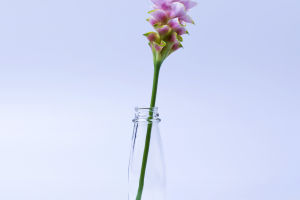With coffee bean production down and milk prices soaring, La Niña has hit Brazil's farming and livestock sector hard.
La Niña, a weather phenomenon characterized by a significant cooling of ocean surface temperatures in the central and eastern equatorial Pacific Ocean, has adversely impacted Brazil's farming and livestock sector. The changes in wind, air pressure, and rainfall, which are associated with La Niña, exacerbate droughts and floods in various regions.
Currently, La Niña has been persistent in the Pacific Ocean for almost three years, and it is poised to become the first "three-peak" La Niña phenomenon of the century, according to the latest report by the World Meteorological Organization.
Agricultural meteorologist Marco Anthony dos Santos has identified North and South America, the Asia-Pacific coast, and Oceania as the regions most affected by La Niña.
Brazil is a major producer and exporter of agriculture and animal husbandry products, which have been the backbone of its economy for many years. However, the country, along with other South American nations, has been continuously affected by La Niña in the last three years.
Experts and consulting agencies predict that the production of soybeans, corn, grains, coffee, and other crops in Brazil in the 2022/2023 crop year will decline, and market prices will rise. Additionally, the cost of poultry and eggs has increased due to the soaring prices of grain and feed.
Ademar Pereira, the chairman of a local rural union, drove us to his coffee garden on a mountain that is 500 meters above sea level, and which specializes in producing high-quality coffee beans. The local government has designated the garden as a nature reserve, leading to strict restrictions on pesticide and fertilizer use.
The cost of irrigating the garden artificially on the mountain is also prohibitively high, so the output of the Pereira coffee garden is affected by the weather.
This year, coffee gardens have experienced winter frosts and low-temperature hailstorms in spring, with no rainfall in nearly a month during the summer, when the coffee beans require ample water.
Coffee branches with fruits of different sizes are common due to the large temperature difference in a single day and the unevenness of hot and cold. As a result, coffee beans that are too small are discarded during the harvest.
In comparison to three years ago, when the Pereira coffee garden produced about 50 bags of coffee per hectare of coffee trees, today, only 15 bags are produced per hectare.
Experts predict that the total output of coffee beans in the Kakundi area will not exceed 10,000 tons during the harvest season in May next year, a sharp drop from the close to 14,000 tons produced in 2017, due to the La Niña phenomenon.
The decline in coffee production caused by La Niña is only the tip of the iceberg for Brazil's entire agriculture. At the beginning of this year, Brazil's National Commodity Supply Corporation (CONAB) predicted that the country's soybean crop in 2022/2023 would reach a record 152.35 million tons.
However, analysts from relevant professional consulting agencies have recently warned that the impact of La Niña could cause Brazil's soybean production to fall below 150 million tons in the 2022/2023 crop year.
The production of maize and cereals has also decreased. In the last two years, the demand for Brazilian corn and grains in the international market has increased, resulting in a decrease in Brazil's domestic grain reserves, and the price of grain and feed for animal husbandry has also risen.
La Niña has dealt a significant blow to Brazil's farming and livestock sector, with declining coffee, soybean, and grain production leading to market price hikes. The impact of the La Niña phenomenon on Brazil's economy highlights the need for climate change mitigation and adaptation strategies to ensure sustainable agricultural production.


